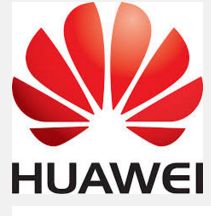On the opening day of the online Better World Summit, Huawei’s Rotating Chairman Guo Ping elaborated on how synergy across five major tech domains will help unlock the full potential of 5G to drive commercial success. Guest speakers from China Telecom, Etisalat, MTN, GSMA, and 3GPP/ETSI were also joined by several thousand online attendees from more than 80 countries to explore how information and communications technology (ICT) can power new economic growth both now and in a post-pandemic world.
Guo Ping talks about 5G commercial success at the Better World Summit 2020
Working together to fight the pandemic with technology
The pandemic has reshaped how we live and work, and has dealt a heavy blow to the world economy. Fortunately, ICT offers a concrete set of tools to aid in the fight against COVID-19 on multiple fronts.
“As an ICT company, it’s our responsibility to use the technology we have to help contain and defeat this pandemic,” said Guo. “Together with our partners and customers, including carriers and enterprises of all types, we can use technological solutions to effect a positive impact on our communities.”
“By drawing on our experience in early hotspots, we have developed nine scenario-based solutions that use ICT technology to help combat the pandemic. Whether it’s hospital network deployment, remote consultation, online education, or restarting governments and businesses, we’ve been sharing our experience and capabilities to help control the spread of the virus and reopen economies.”
Unlocking the full potential of 5G: Synergy across five major tech domains
There are already more than 90 million 5G users worldwide. “As global 5G deployment begins to wrap up, we need to strengthen our focus on industry applications,” Guo said. “This will help us unleash the full potential of 5G.”
The business case for 5G is not just better connectivity. When technologies like 5G, computing, cloud, and AI come together, they reinforce each other and create numerous opportunities across five major tech domains: connectivity, AI, cloud, computing, and industry applications.
“Huawei has in-depth strengths in each of these domains,” Guo continued. “We can mix and match them to create scenario-based solutions that meet the unique needs of our customers and partners. This is key to unlocking the full potential of 5G and driving commercial success.”
For 5G to succeed commercially, the entire industry needs to work together. Vertical industry applications can be replicated at scale only when unified industry standards and a collaborative ecosystem are in place. “Moving forward, Huawei will double down on efforts to equip our partners with the capabilities they need,” Guo said. “We will promote joint innovation, and drive growth for everyone in the value chain.”
Balancing short-term and long-term goals: Precise deployment for maximum value
Guo said, “Given the current economic environment, carriers need to focus on both short-term and long-term goals. More precise deployment is how they can maximize the value of their networks.” Huawei has three suggestions for this.
First, carriers should prioritize user experience and spend money where it’s needed most to maximize the value of existing networks.
Second, carriers should make the most of existing 4G and FTTx networks, and integrate them with new 5G networks through holistic coordination and precise planning.
Third, 5G deployment plans should prioritize hotspots and key industry applications.
2 mins read
Huawei’s Guo Ping: Unlock the Full Potential of 5G to Drive Commercial Success






